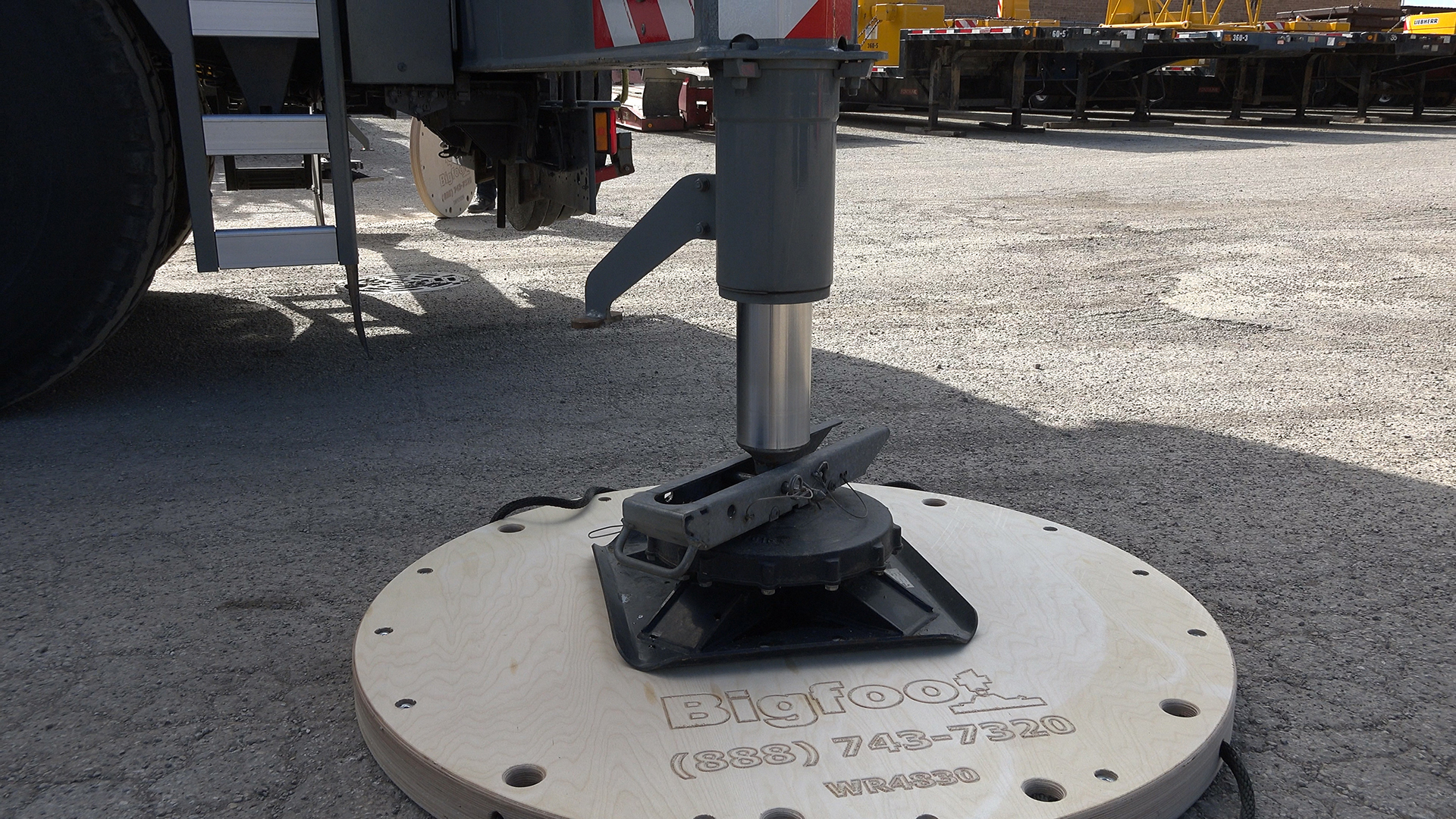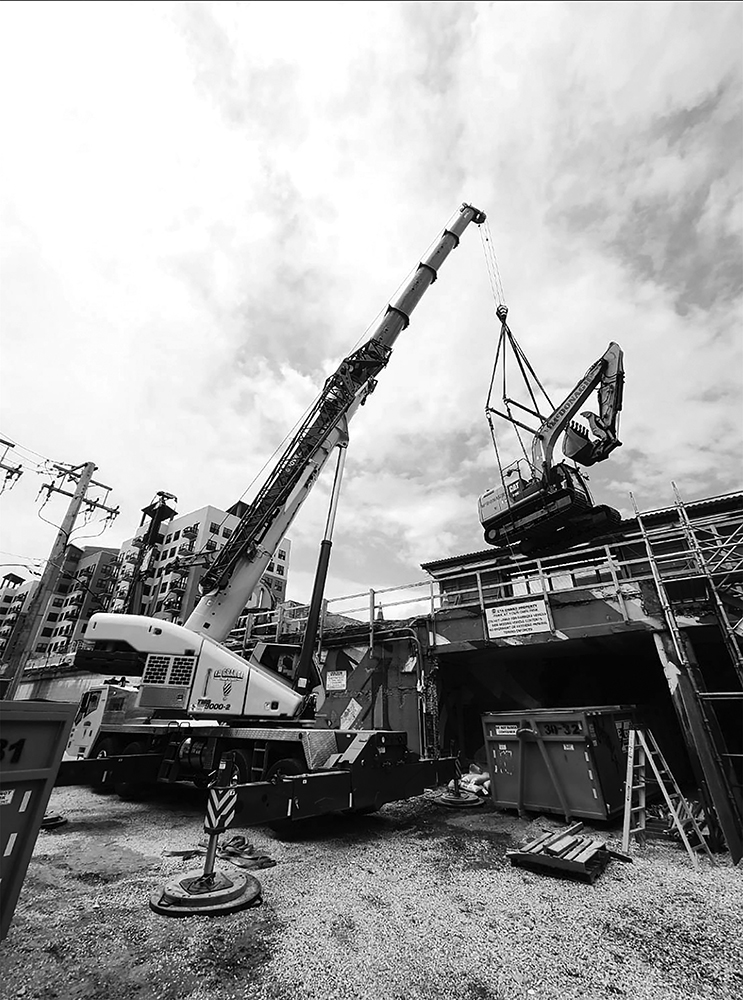The Function of Outrigger Pads
September 11, 2024
General Information, News, Outrigger Pad Quality

Outrigger pads are placed under the outriggers of a crane, all other Load Handling Equipment, to broadcast the load over a larger surface area. This broadcasting is crucial in preventing the crane from sinking/punching into the ground or tipping over, especially on soft or uneven terrain. By increasing the footprint of the crane’s support system, outrigger pads help maintain stability and balance, ensuring safe lifting operations.
Importance of Quality
- Enhanced Safety: The primary reason for using high-quality outrigger pads is safety. Inferior or worn-out pads can fail under pressure, leading to catastrophic accidents. High-quality pads are designed to withstand significant weight and harsh conditions, providing a reliable foundation for crane operations.
- Durability and Longevity: Quality outrigger pads are made from robust materials such as Bigfoot’s Custom Composite and Premium Baltic Birch materials that offer a variety of benefits that lower quality pads do not. These materials ensure that the pads can endure the stresses of heavy lifting and harsh environmental conditions, offering long-term performance and reducing the frequency of replacements.
- Cost-Effectiveness: Investing in high-quality outrigger pads may seem costly upfront, but it saves money in the long run. Durable pads require fewer replacements and repairs, reducing downtime and maintenance costs. Moreover, preventing accidents and equipment damage can save substantial amounts in liability and insurance claims.
- Improved Efficiency: Reliable outrigger pads streamline the setup process, allowing for quicker and more efficient crane deployment. Workers can have confidence in the stability of their equipment, leading to smoother operations and increased productivity on the job site.
- Compliance with Regulations: Adhering to industry safety standards and regulations is non-negotiable. Using quality outrigger pads ensures compliance with these standards, avoiding legal penalties and enhancing the reputation of the company as a safety-conscious operator.
Choosing the Right Outrigger Pads
Selecting the appropriate outrigger pads involves considering several factors:
- Load Capacity: Ensure the pads can support the maximum weight of the crane and its load.
- Ground Conditions: Assess the terrain where the crane will be operating. Different materials and designs may be required for soft soil, sand, gravel, or concrete.
- Size and Shape: The pads should be large enough to broadcast the load effectively but also fit within the operational constraints of the job site.
- Material: Opt for high-quality materials like Custom Composite, Premium Birch, or engineered Steel that offer a balance of strength, flexibility, and resistance to environmental factors. Material will depend on climate, size of the equipment being used, Ground Bearing Capacity (GBC), or the Allowable Ground Bearing Pressure (AGBP) which is identified in the lift plan before the execution of the job.

Conclusion
In conclusion, the importance of using high-quality outrigger pads for crane operations cannot be overstated. They are a critical component in ensuring the safety, efficiency, and longevity of load handling operations. By investing in superior outrigger pads, companies not only protect their equipment and workforce but also enhance their operational efficiency and compliance with safety standards. In the high-stakes world of heavy lifting, cutting corners on safety is never an option. Quality outrigger pads are a small investment that yields significant returns in safety and performance.

